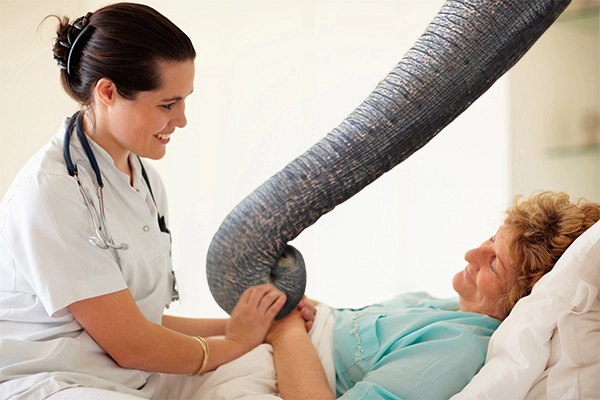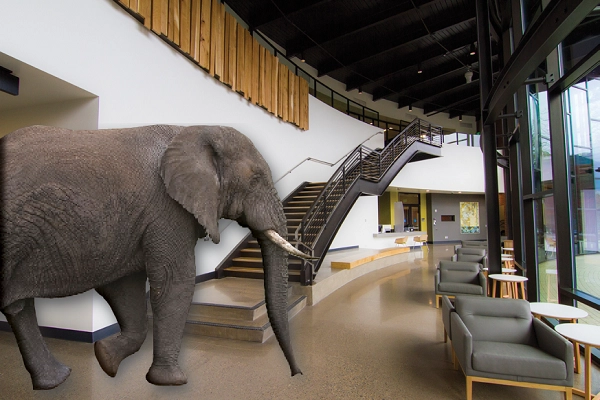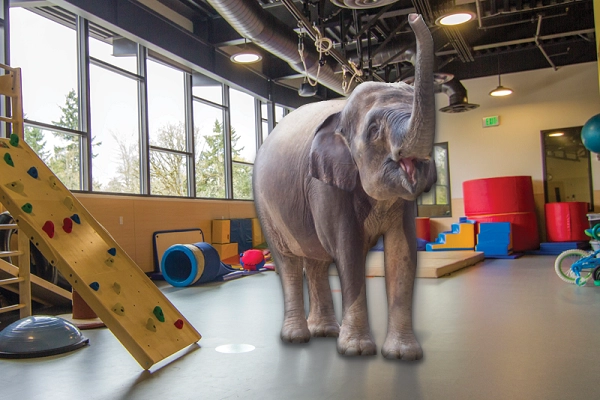Elephant therapy has jumbo benefits for patients


If visits from small animals make a big difference for patients, just think how much good a larger animal could do.
That’s the philosophy behind Salem Health’s new elephant therapy program.
“We took all of the techniques we had mastered in pet therapy with dogs and cats, and scaled them up — way up,” says April Fulsday, RN, manager of the Provider-Pachyderm Partnership Program (4P).
Fulsday explains that the hospital had long wanted to push the boundaries of what is possible in animal-based therapies, but had been limited by facilities.
“When I heard that we were building a new rehabilitation center, I knew the time had come,” Fulsday says. “I presented the 4P idea, and the organization just jumped on it.”
Salem Health’s new rehabilitation center incorporates many elephant-friendly elements. “The high ceilings; clear, warm pools; and reclaimed wood accents all mimic the elephant’s jungle origins,” says local architecture enthusiast May B. Madeup.

Therapy elephant Jumbo appreciates the open, elephant-friendly design of the new rehabiliation center.
“Even the new aromatherapy with the hint of peanuts calms both patient and therapist,” Madeup added. “Salem Health is at the forefront of the global elephant-centered design movement.”
And the result? Patients love the new program!
“When I tore my ACL, I was afraid I would never run again,” says Bill Owney, one of the first patients to experience elephant therapy. “But having Jumbo by my side during water aerobics was a real motivator. I figured, if this elephant can finish a set of leg lifts, why can’t I?”
The program has not been without challenges, however. “There was an incident at the salad bar,” says Joe King, foreman of Salem Health’s maintenance staff. “Basically, elephants are no longer allowed in the cafeteria.”
Of course, not everyone sees the salad bar incident as a negative. In fact, Jumbo recently visited a local elementary school with a team from the Community Health Education Center to demonstrate healthy eating habits for kids.
“I’ve never seen anybody eat so much lettuce,” says 8-year-old Dinah Mite. “He didn’t even put ranch on it.”

The kids gym at the new rehabilitation center makes pediatric therapy fun by incorporating play, exercise... and elephants.
You can help
Ladies, gentlemen and children of all ages can benefit from elephant therapy. Unfortunately, there aren’t nearly enough elephants to go around. Fulsday says that the hospital has enough therapy demand to keep at least 10 more elephants busy.
“Anyone who has a friendly, housebroken elephant in their back yard should consider volunteering to be part of the 4P program,” Fulsday says. “An elephant in the room is something our patients will never forget.”